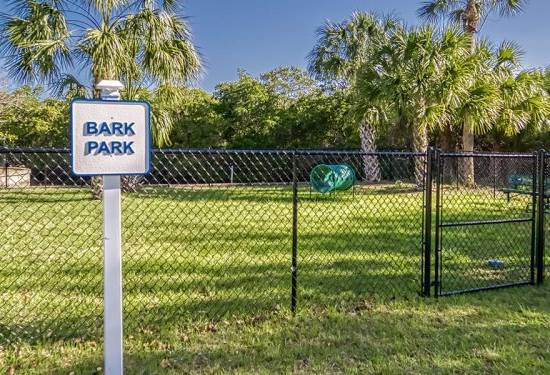
What if you could turn your dream home into a reality in just a matter of weeks? No endless delays, no spiraling costs—just a beautiful, custom-built space that’s all yours, right in the heart of Florida. That is what modular homes are making possible. They’re transforming the way people think about building a home in the Sunshine State.
Whether you are starting a family, downsizing, or finally building that vacation retreat you’ve always dreamed of, modular homes in Florida are giving you a chance to create a space that truly feels like home. Curious how? Let’s find out.
Understanding Modular Homes

It is important to distinguish between modular, mobile, and manufactured homes, as these terms are often used interchangeably but refer to different types of housing.
- Modular Homes: These homes are built to the same local, state, and regional building codes as traditional houses, ensuring they meet all safety and quality standards. They offer the flexibility to design and customize your home to fit your needs and preferences, making them a popular choice for those looking for a personalized living space.
- Mobile Homes: Also known as trailers, mobile homes are built on a permanent chassis, allowing them to be moved from one location to another. While mobile home parks in Florida offer mobility, they are constructed to a national HUD code rather than local building codes, which can limit customization options.
- Manufactured Homes: These homes can be placed on either temporary or permanent foundations. Like mobile homes, they adhere to the national HUD code and generally offer fewer customization options than modular homes.
Construction process of Modular Homes in Florida

- Preparing the Site for Your Home
Once the modules are complete, they are transported to the final building site. Before they arrive, the site must be carefully prepared. This includes leveling the ground, laying a solid foundation, and setting up essential utilities such as water, electricity, and sewage systems. Proper site preparation ensures that when the modules arrive, they can be assembled without delays. - Transporting the Modules
The completed modules, which are typically 70% to 90% finished, are then transported to the site on flatbed trucks. These modules are designed to meet specific transportation regulations, ensuring they can be safely moved from the factory to your new home’s location. The journey from the factory to the site is an important step, requiring careful planning and coordination. - Assembling Your Home
When the modules arrive at the site, the real transformation starts. Cranes lift and position each module onto the foundation with great precision. It’s important that the modules are perfectly aligned and securely fastened together using industrial-strength screws and glues.
The final touches include sealing the joints and integrating the modules into a single, energy-efficient structure. This detailed process not only accelerates construction but also ensures that your modular home is durable and equipped to handle Florida’s challenging weather conditions.
Why more Floridians are falling in love with Modular Homes

In Florida, where unpredictable weather and a competitive housing market can pose challenges, modular homes offer significant advantages. These homes are built in a controlled factory setting, meaning they are ready in a fraction of the time it takes to build a traditional home. No waiting for weeks because of rainstorms or delays—just a smooth, efficient process that gets you into your new home sooner.
But speed isn’t the only benefit. Modular homes are designed with energy efficiency in mind, helping keep your home cool during Florida’s hot summers without high utility bills. Plus, they’re built to last, providing peace of mind that your home can withstand everything from hurricanes to everyday wear and tear.
How a Modular Home fulfills your dreams

Choosing a modular home isn’t just about being practical—it’s about choosing a way of life that is better for you, your family, and the planet. Here’s why so many people are making the switch:
- A home that is uniquely yours
Modular homes are highly customizable, so you can create a space that reflects your style and meets your needs. Whether you’re dreaming of a cozy beachside cottage or a spacious modern haven, modular homes offer endless possibilities to design your perfect home. - Built with love and care
Modular homes are crafted in a factory, but that does not mean they are impersonal. Each home is built with the same attention to detail and commitment to quality as any traditional home, ensuring it is a place where memories are made and lives are lived. - Eco-friendly living
With modular homes, you are not just building a house—you are choosing a more sustainable future. These homes are designed to be energy-efficient and environmentally friendly, helping you reduce your carbon footprint and live a greener life. - A safe and secure space
In Florida, safety is a top priority. Modular homes are built to withstand the challenges of the local climate, offering you peace of mind knowing your home is as strong as it is beautiful. From hurricane-proofing to high-quality materials, every detail is designed to keep you and your loved ones safe.
Challenges that come with building a Modular Home
Of course, no homebuilding process is without its challenges, and modular homes are no exception. Financing can sometimes be tricky, because not all lenders are familiar with the process. And while modular homes offer plenty of customization, there may be some limitations compared to traditional custom builds.
Resale value is another consideration. While modular homes are built to last, some buyers still hold onto outdated perceptions about their value. However, as more people experience the benefits of modular living, this perception is changing, and the market for modular homes is growing rapidly.
Understanding the costs of Modular Living
When you decide to build a modular home in Florida, it is important to understand the costs involved. While these homes are typically more affordable than traditional builds, there are still factors to consider, such as land costs, site preparation, and any custom features you may want to add. But for many, the investment is worth it for a home that offers so much in return.
Is a Modular Home in Florida the right choice for you?
If you’re looking for a home that’s more than just a place to live—a home that is a reflection of your values, your style, and your dreams—then a modular home might be exactly what you have been searching for. Whether you are drawn to the speed, the cost savings, or the opportunity to create something truly unique, modular homes offer a modern, sustainable way to build a life you love.
So, if you are ready to take the next step, now is the perfect time to explore the world of modular living and grab the endless opportunities that await. If you are not yet ready to invest time in a modular home but want a move-in-ready home, we are here to help. Check out our communities now. Contact us today to learn more.


